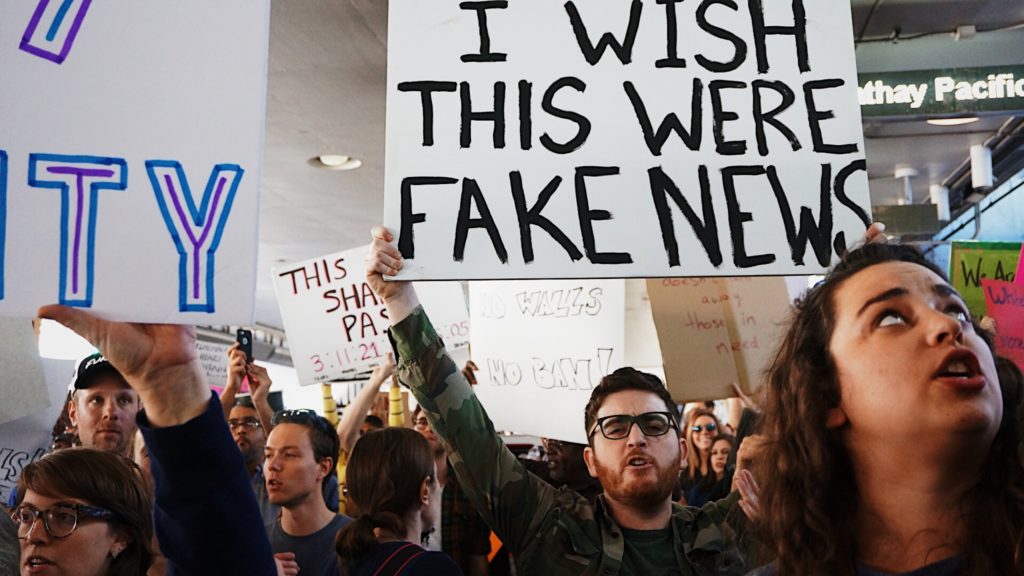 On Friday, U.S. Attorney General Jeff Sessions had a meeting about marijuana with a balanced group of individuals on both sides of the discussion.
On Friday, U.S. Attorney General Jeff Sessions had a meeting about marijuana with a balanced group of individuals on both sides of the discussion.
Just kidding, this was as diverse as the 30-man deep meeting on maternity care.
“I think it’s a big issue for America, for the country, and I’m of the general view that this is not a healthy substance,” Sessions said in his opening remarks, the only recorded portion of the meeting. “I do believe, and I’m afraid, that the public is not properly educated on some of the issues related to marijuana. And that would be a matter that we could, all of us together, maybe be helpful in working on and that would allow better policy to actually be enacted.”
According to Marijuana Moment, Sessions met with the following people from the following organizations:
- Edwin Meese III, U.S. attorney general under the Reagan administration.
-
- Edwin is an 86-year-old man who, while attorney general in 1985, boarded a helicopter to go masturbate to watch a DEA raid in Arkansas, ready to swing a machete on some cannabis crops in a show of manliness proving just how tight of a grip the federal government had on the drug war.
-
- Kevin Sabet, president and CEO of Smart Approaches to Marijuana.
-
- Last September, Sabet admitted to lying several times at a forum at the Edward M. Kennedy Institute for the United States Senate. He brought two bags of candy to this meeting, claiming one was infused with marijuana and that nobody would be able to tell the difference. Somebody stole the bags after he left them unattended and submitted them for testing, which revealed that none of the candies contained any marijuana. He was chastised for leaving a controlled substance unattended. Amateur move, Kevin.
-
- Bertha Madras, a former Office of National Drug Control Policy staffer and a member of President Trump’s Commission on Combating Drug Addiction and the Opioid Crisis
-
- She works for the government, so she must have been there to discuss the patent held by the Department of Human Services stating cannabinoids have medical benefits. Or maybe she was there to discuss marijuana’s impact on the opioid crisis.
- Probably not. Here she is in the Washington Post last year saying the DEA is correct in labeling marijuana a schedule 1 narcotic, which means it has no medical benefits and is as dangerous as heroin and LSD. She argues that because the FDA has not performed the rigorous testing required to properly qualify marijuana as medicine, it is not medicine and should not be considered as such until they do. Yet rather than advocate for continued research in light of overwhelming evidence supporting marijuana’s medical benefits, she’d rather keep acting like it’s not medicine and never will be medicine. Alcohol isn’t medicine, is sold on every street corner and kills a hundred thousand people a year.
-
- Robert DuPont, former director of the National Institute on Drug Abuse
-
- DuPont says marijuana is “the most dangerous drug” and that marijuana contains “four times as much tar and 60% more cancer-causing chemicals than cigarettes,” a dubious claim that semi pertains to unfiltered marijuana cigarettes rather than modern consumption methods like vaping or ingesting tinctures or oils. A 2014 study found virtually no evidence of a link between cannabis use and lung cancer.
-
- David Evans, executive director of the Drug Free Schools Coalition
-
- Last but not least we have the “think of the children” card. Somebody please tell this man that nobody is selling or giving weed to his kids.
-
Not a single pro-cannabis organization was in on the meeting, a seemingly common tactic for this thin-skinned administration. The “not enough research” excuse is pulled by every single one of these people, yet they are opposed to the very research that could either substantiate or negate their concerns. In reality, the answers to concerns about health risks, lung cancer, overconsumption, and whether or not weed is medicine will be found through research, education, and proper testing and labeling, not through prohibition or by denying science.
I guess for now we’ll just have to refer to the U.S. government’s own patent on whether cannabinoids have medicinal benefits:
“Cannabinoids have been found to have antioxidant properties, unrelated to NMDA receptor antagonism. This new found property makes cannabinoids useful in the treatment and prophylaxis of wide variety of oxidation associated diseases, such as ischemic, age-related, inflammatory and autoimmune diseases. The cannabinoids are found to have particular application as neuroprotectants, for example in limiting neurological damage following ischemic insults, such as stroke and trauma, or in the treatment of neurodegenerative diseases, such as Alzheimer’s disease, Parkinson’s disease and HIV dementia. Nonpsychoactive cannabinoids, such as cannabidoil, are particularly advantageous to use because they avoid toxicity that is encountered with psychoactive cannabinoids at high doses useful in the method of the present invention. A particular disclosed class of cannabinoids useful as neuroprotective antioxidants is formula (I) wherein the R group is independently selected from the group consisting of H, CH.sub.3, and COCH.sub.3. ##STR1##”
Photo by Kayla Velasquez on Unsplash